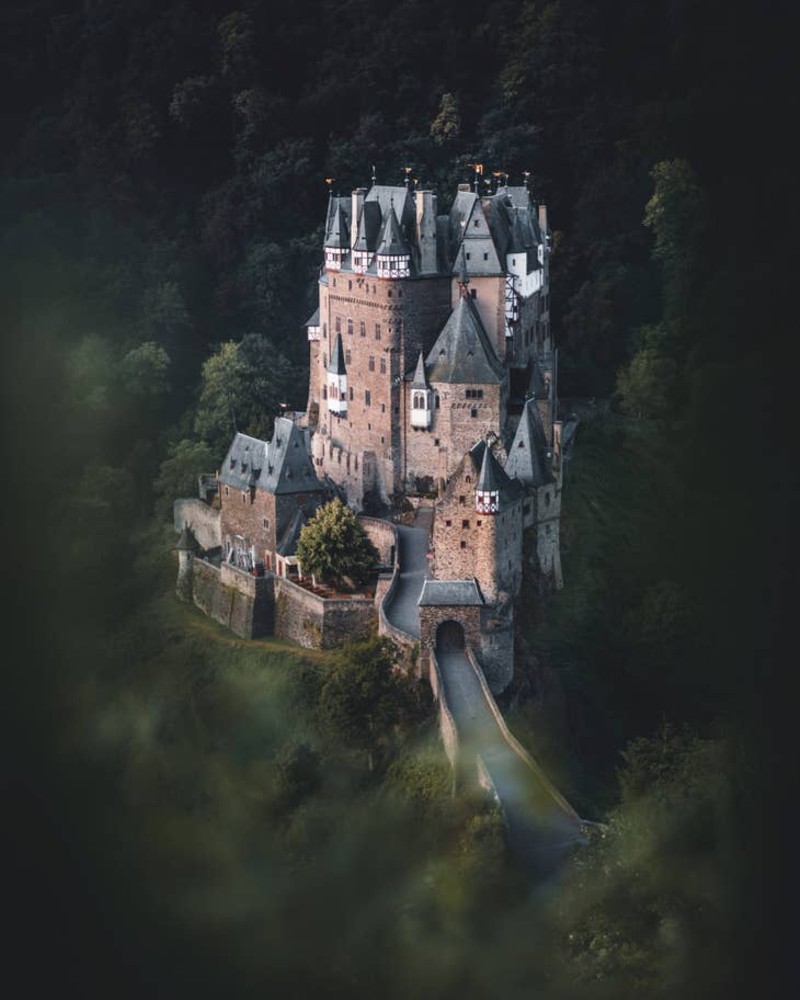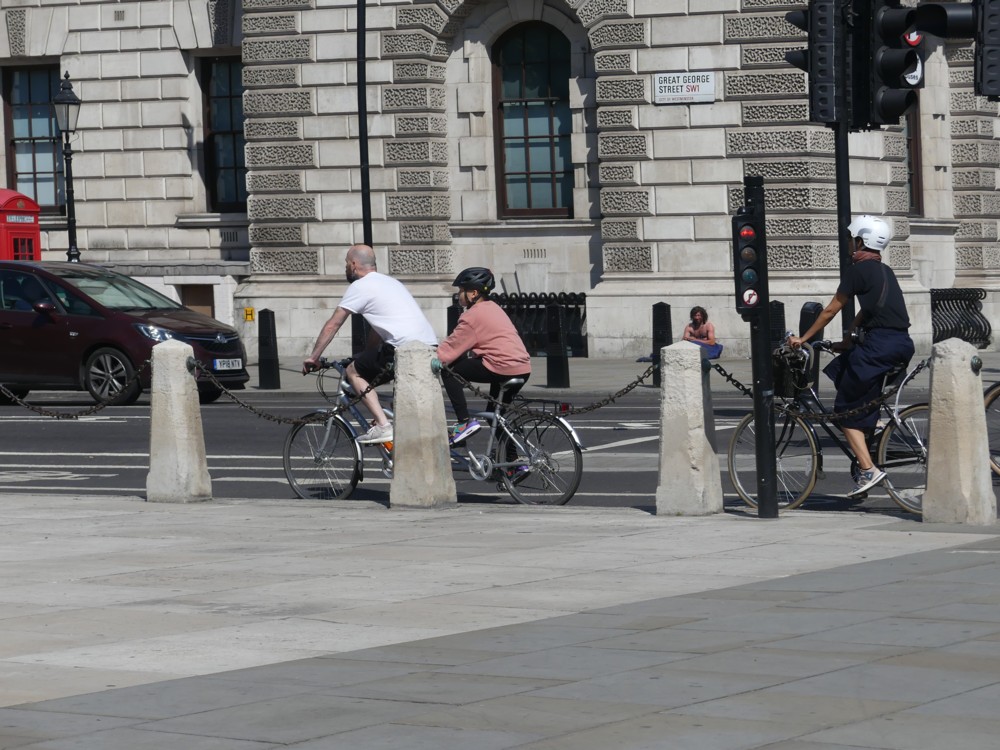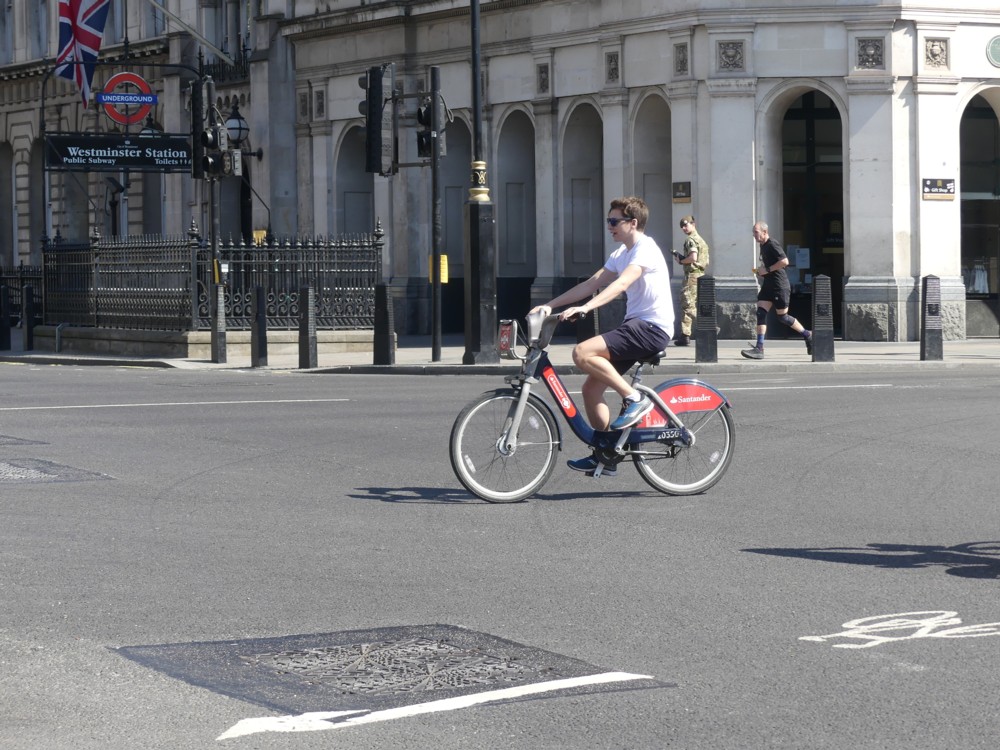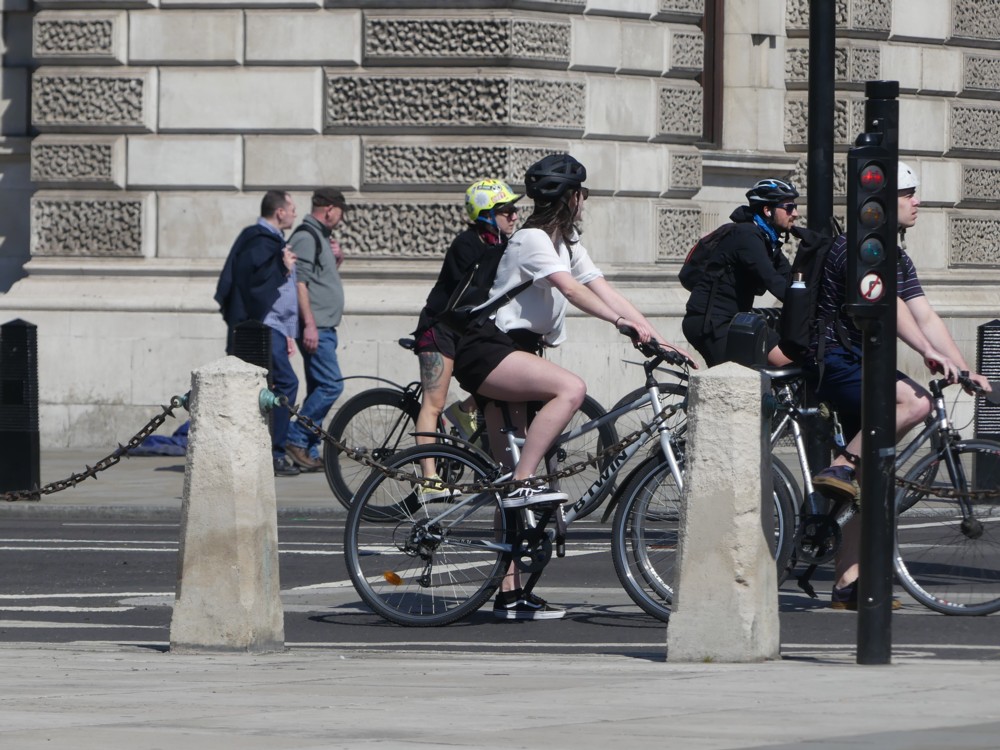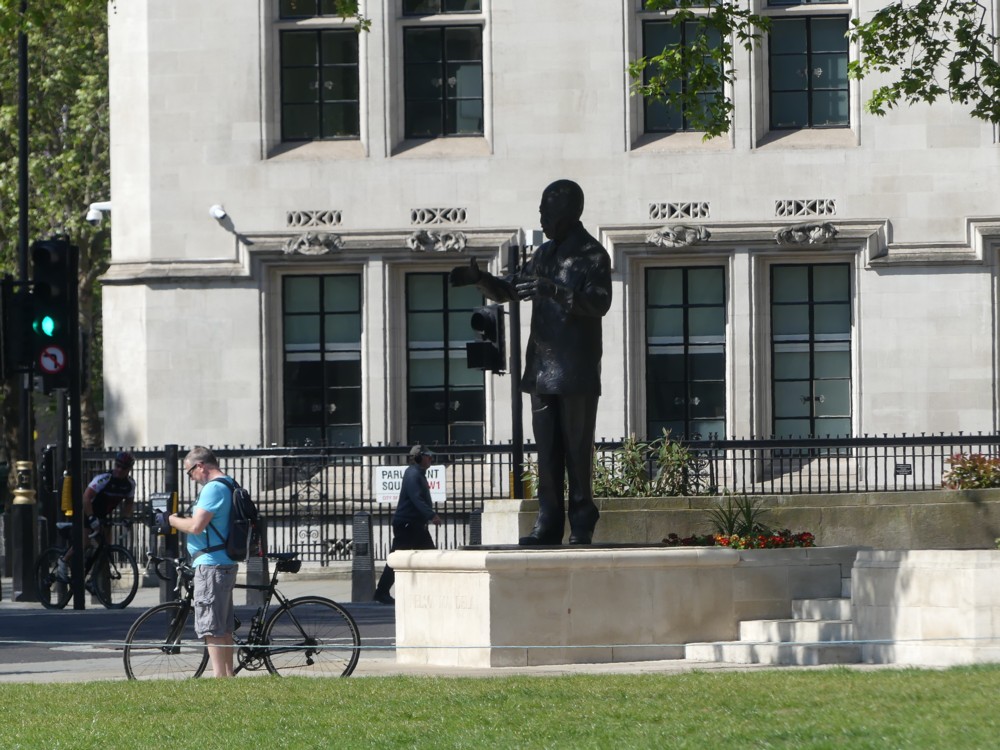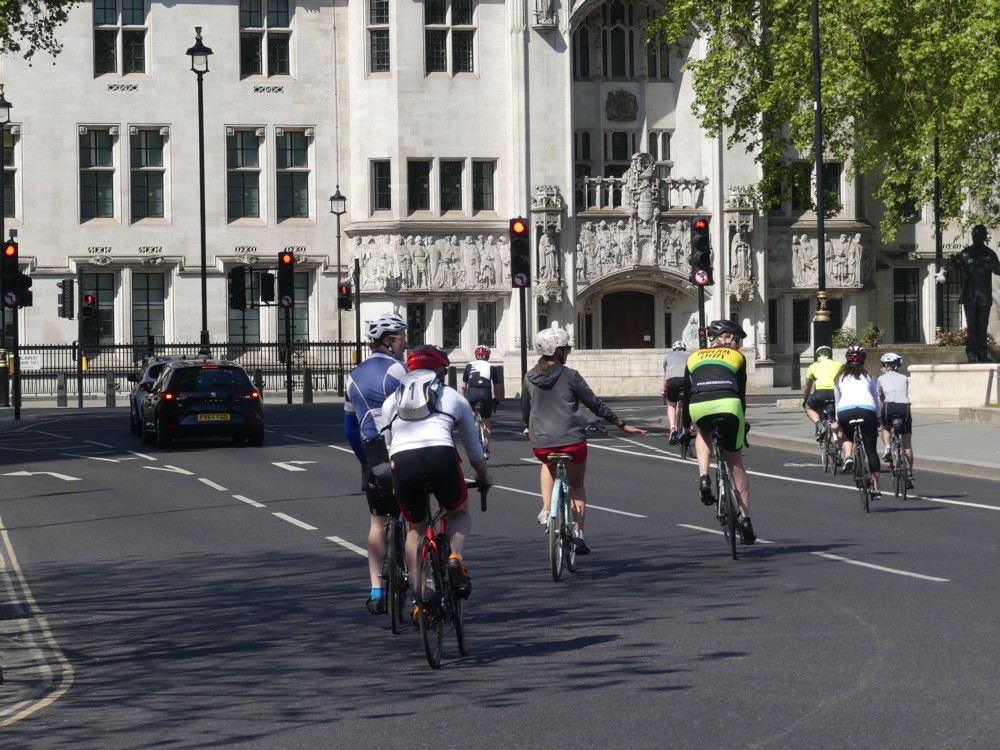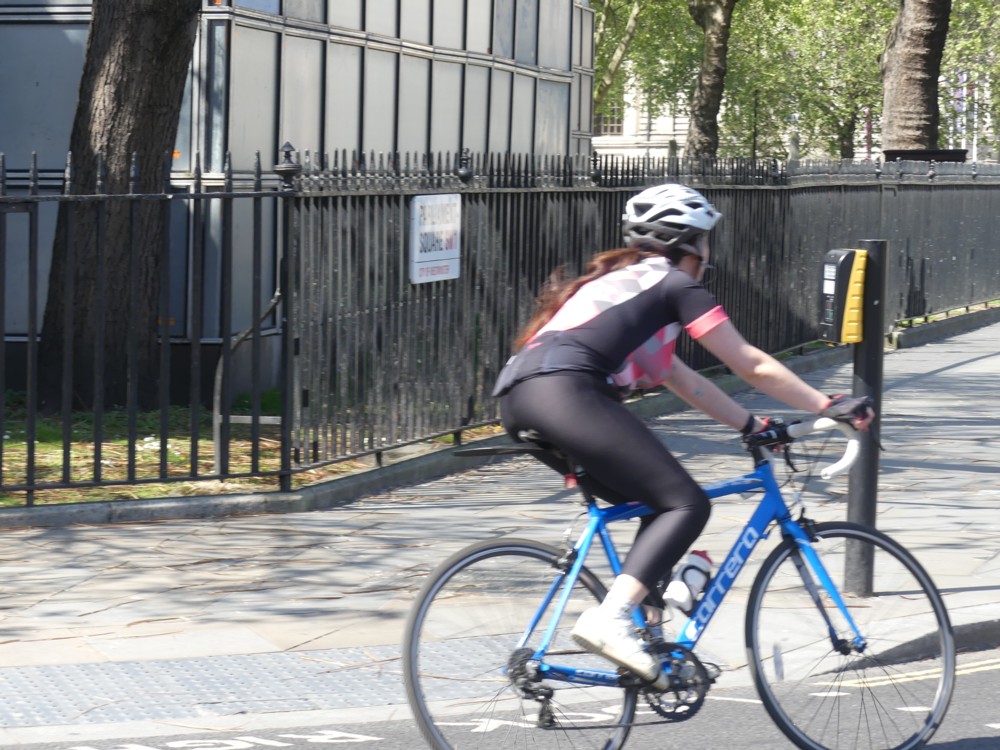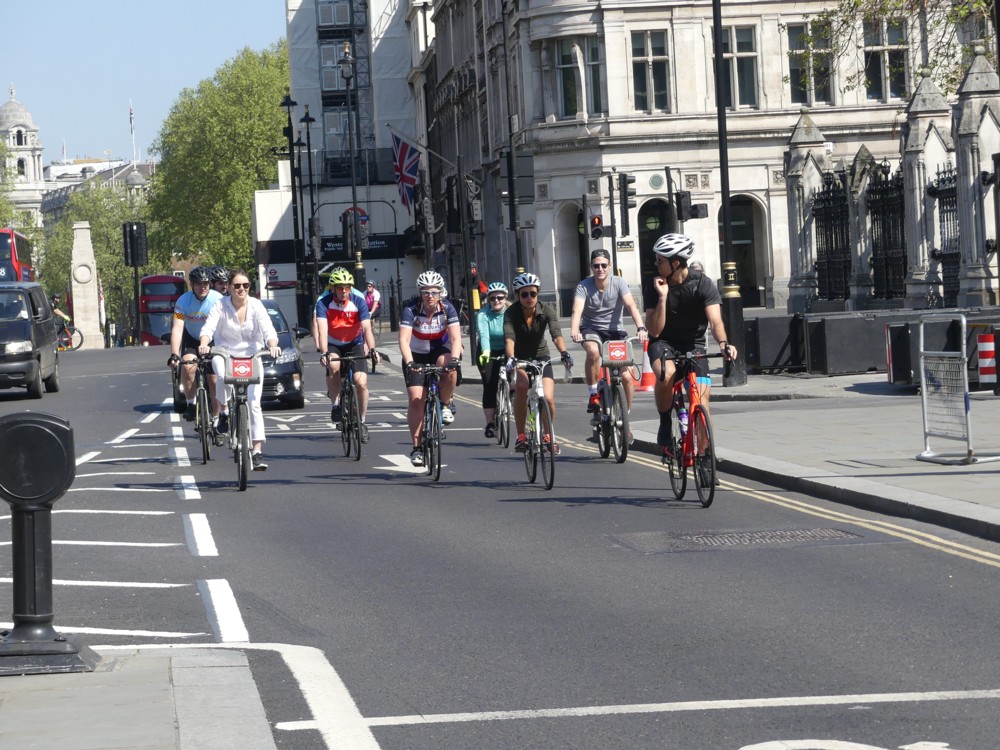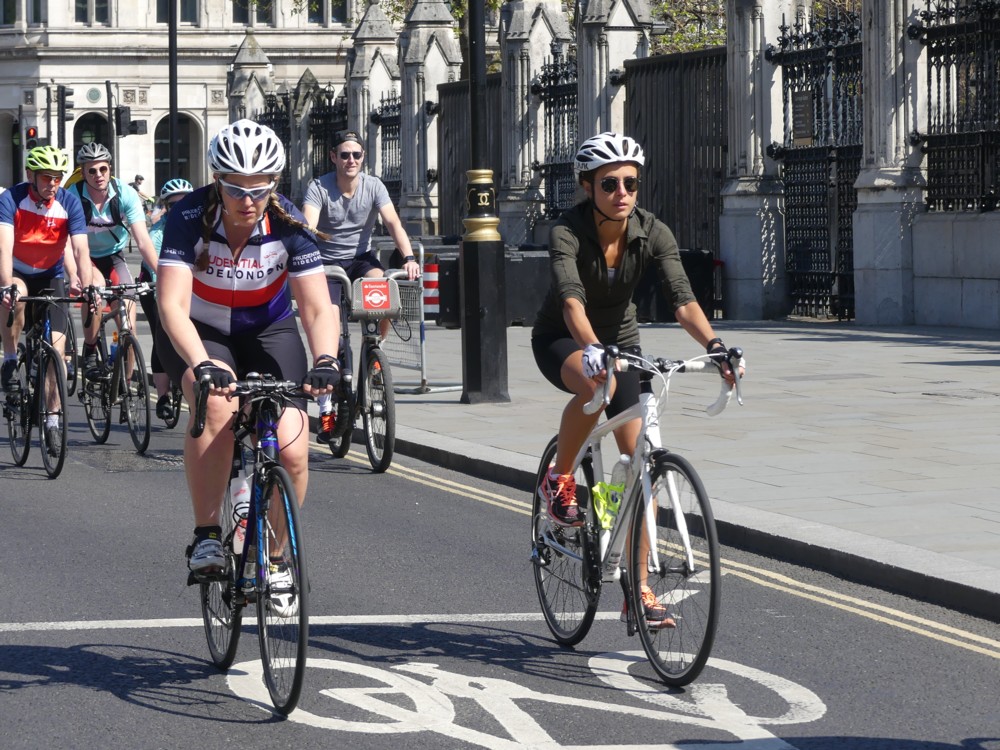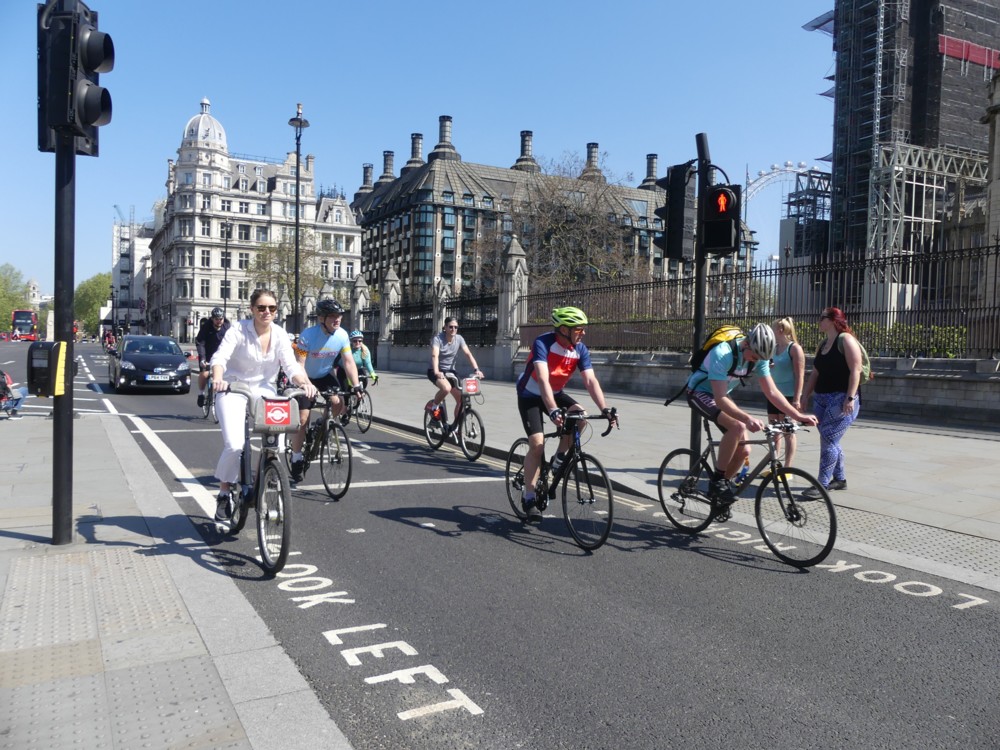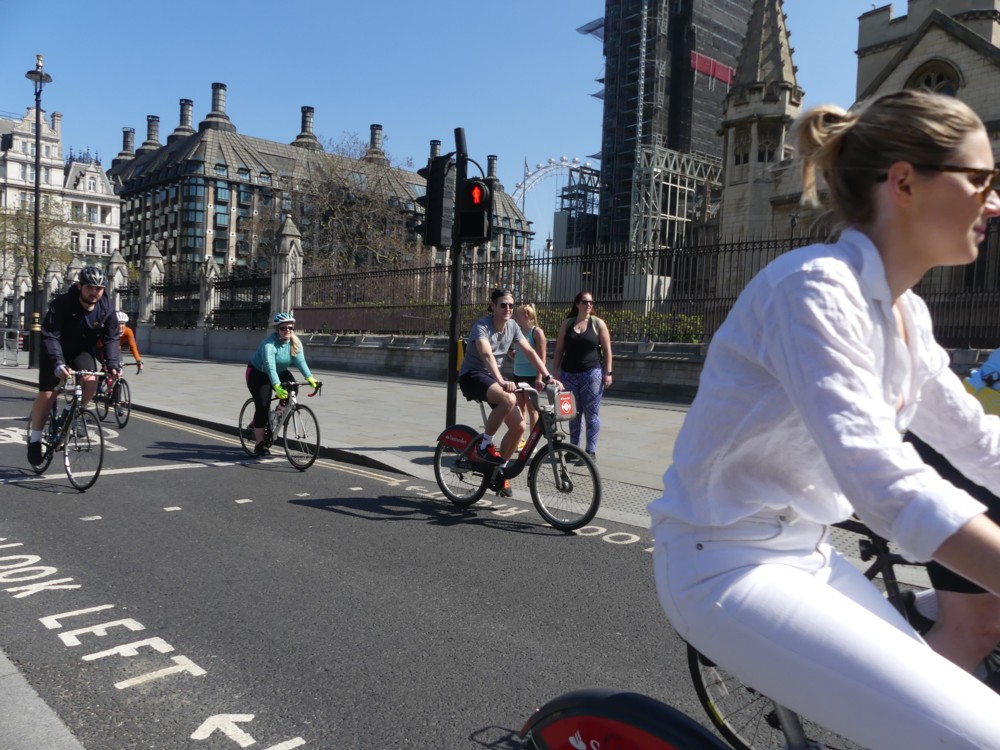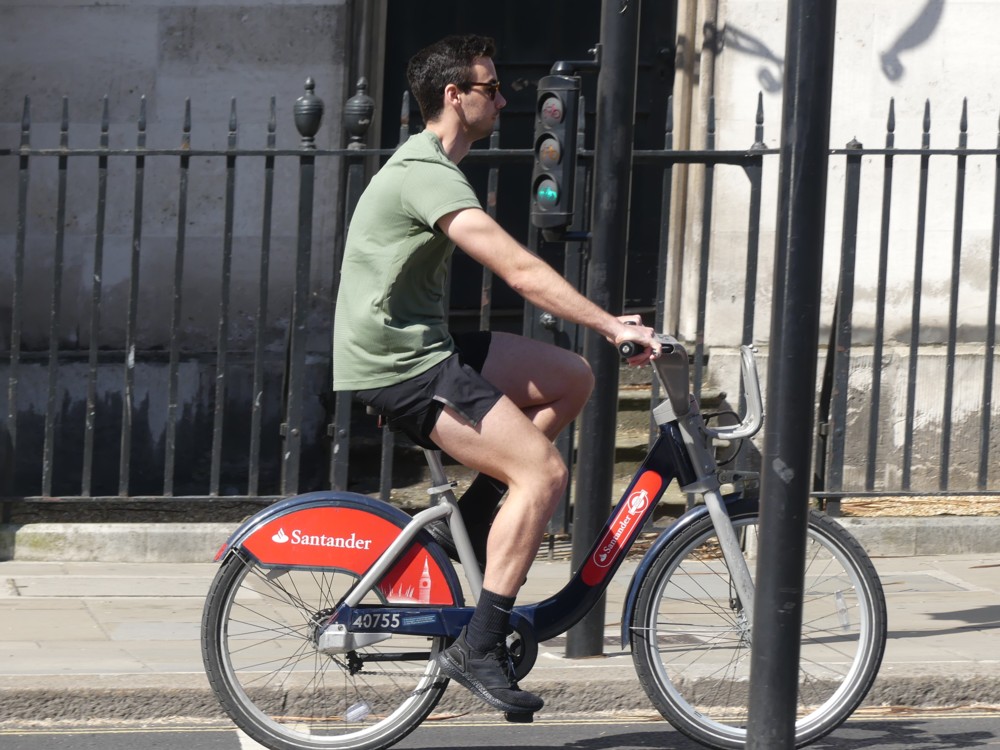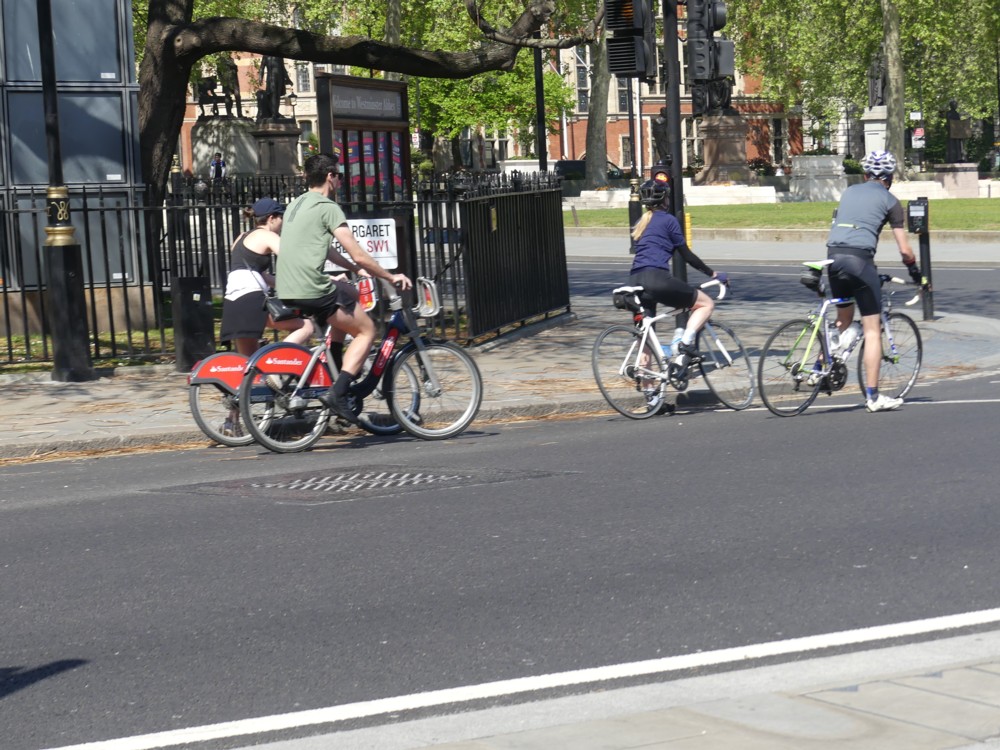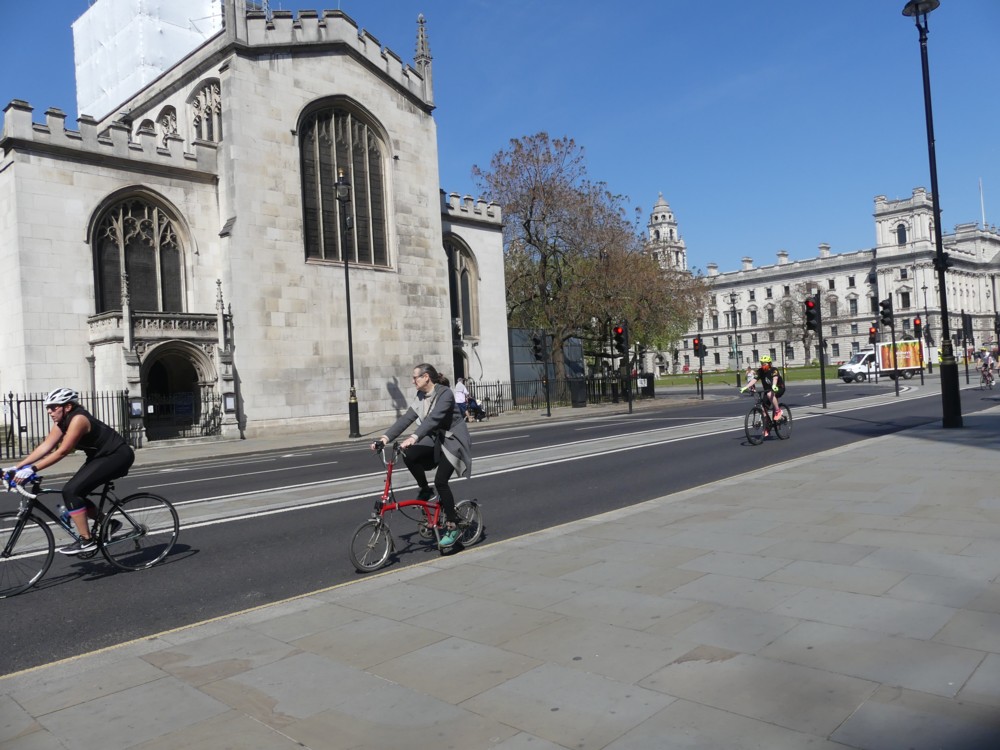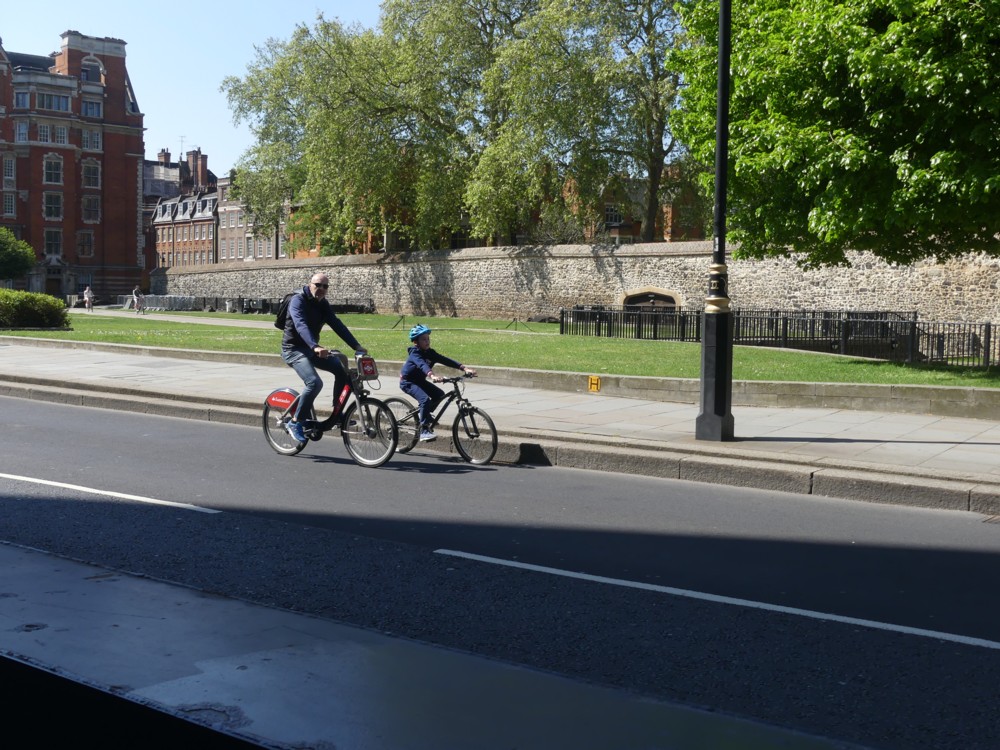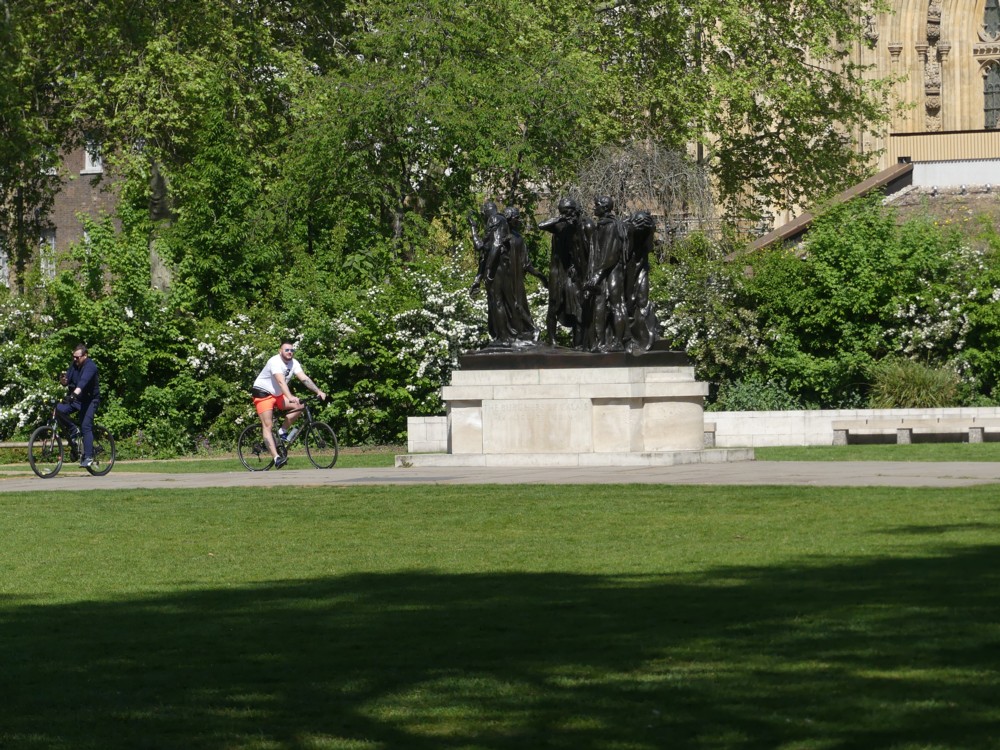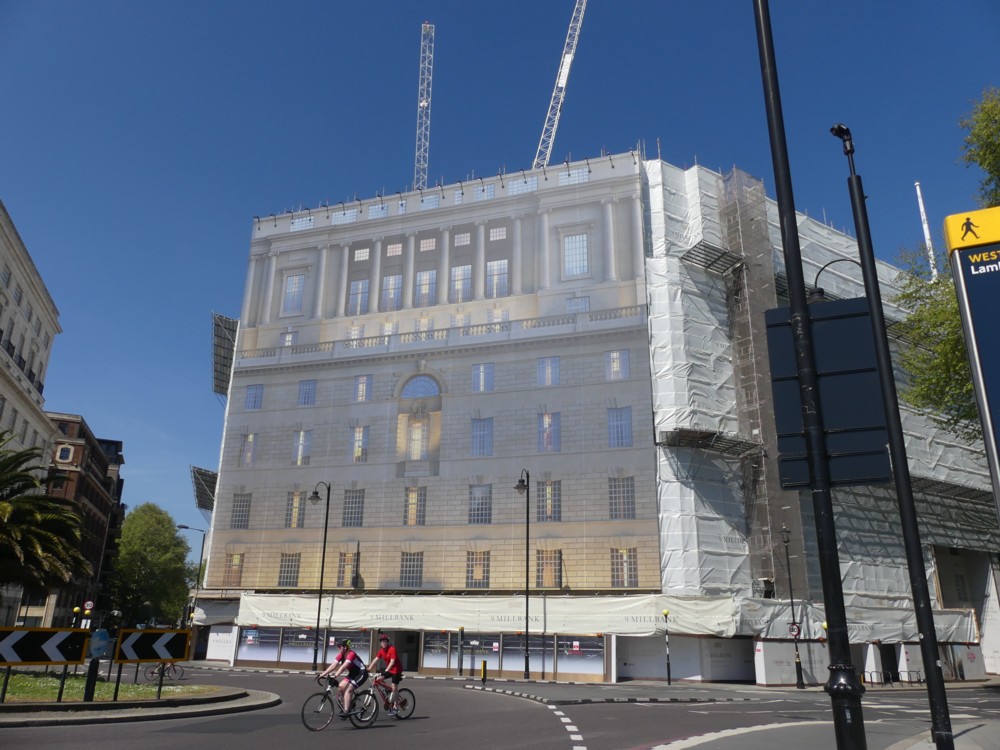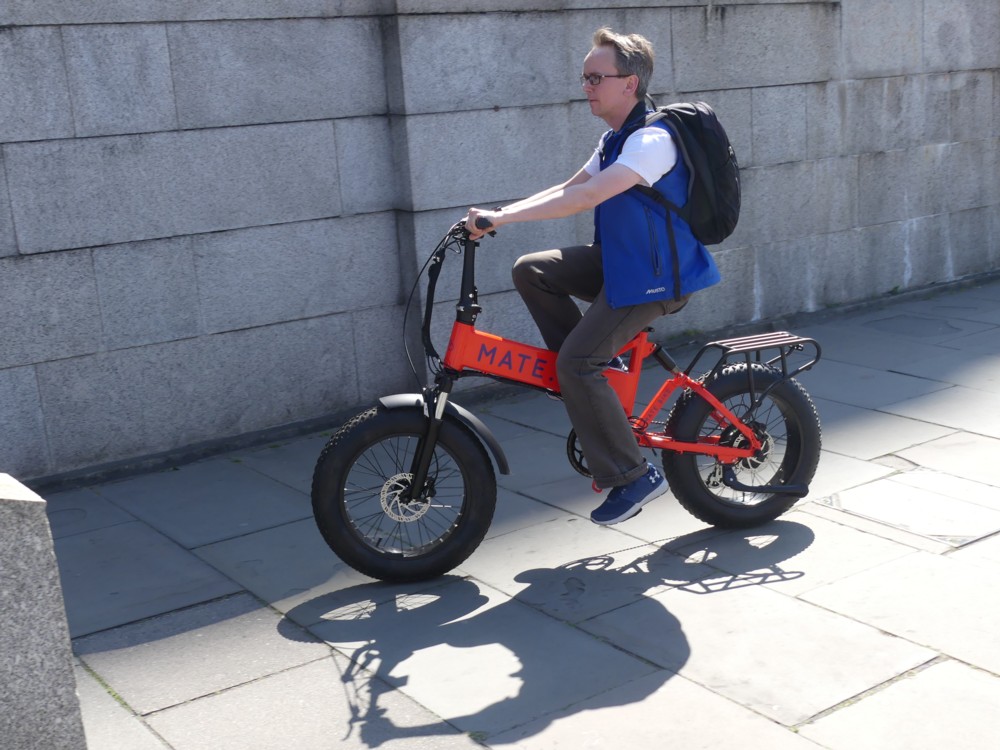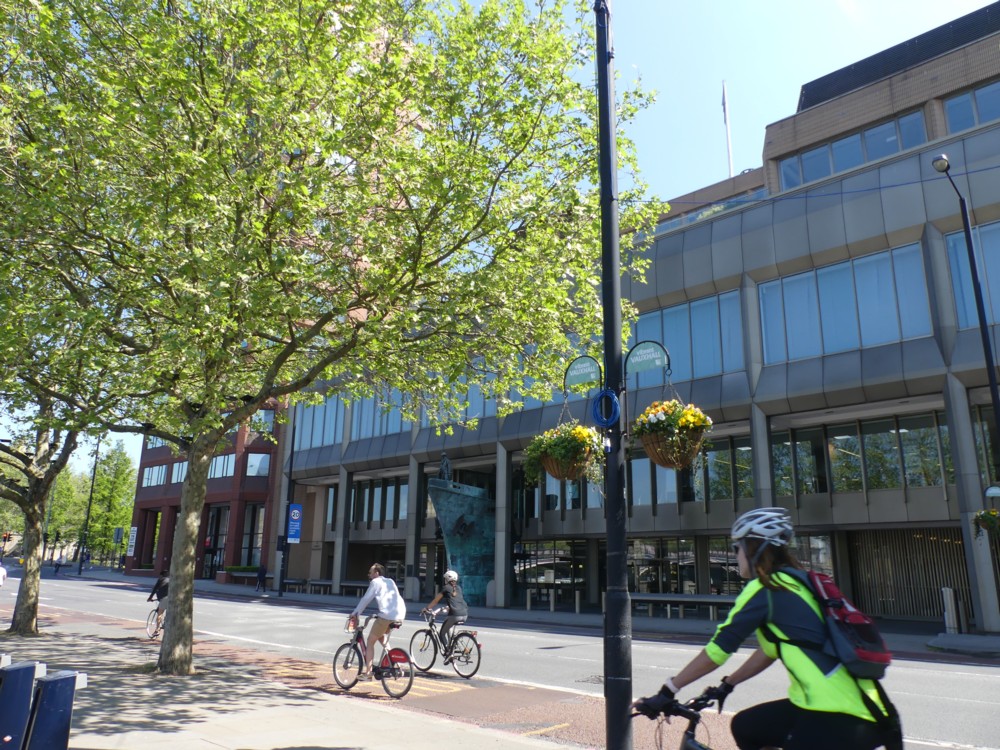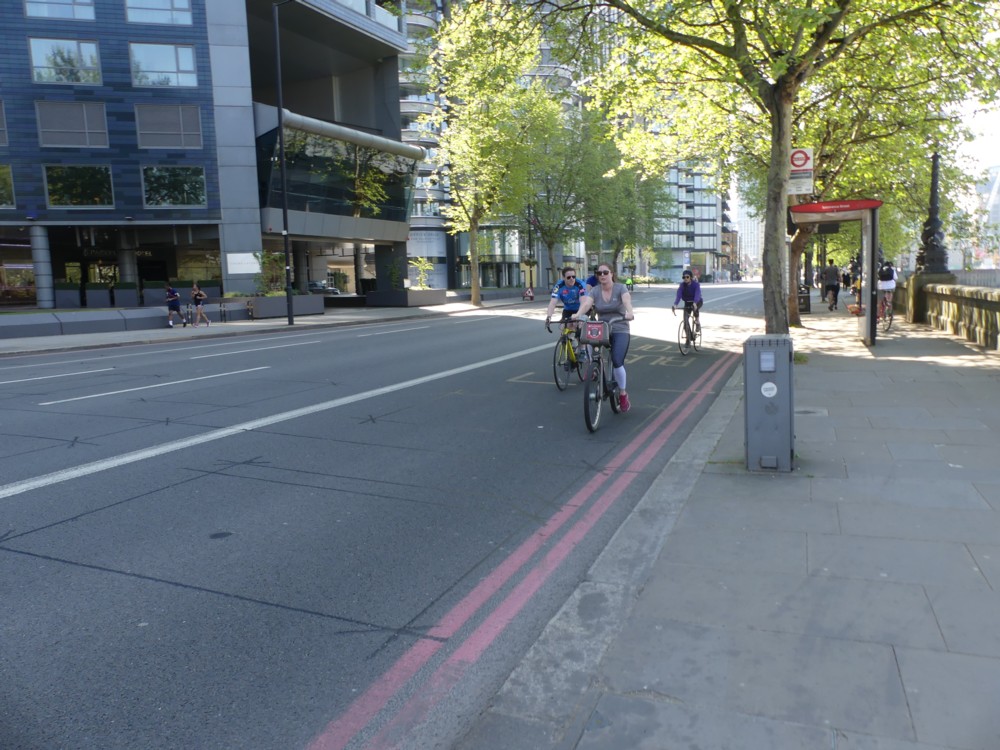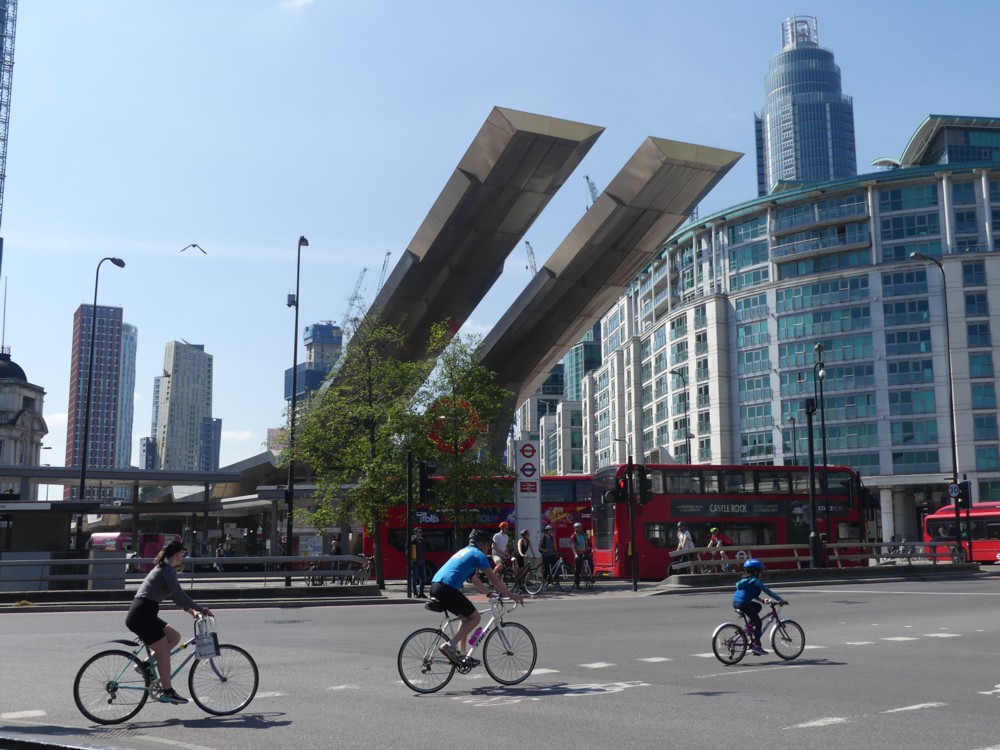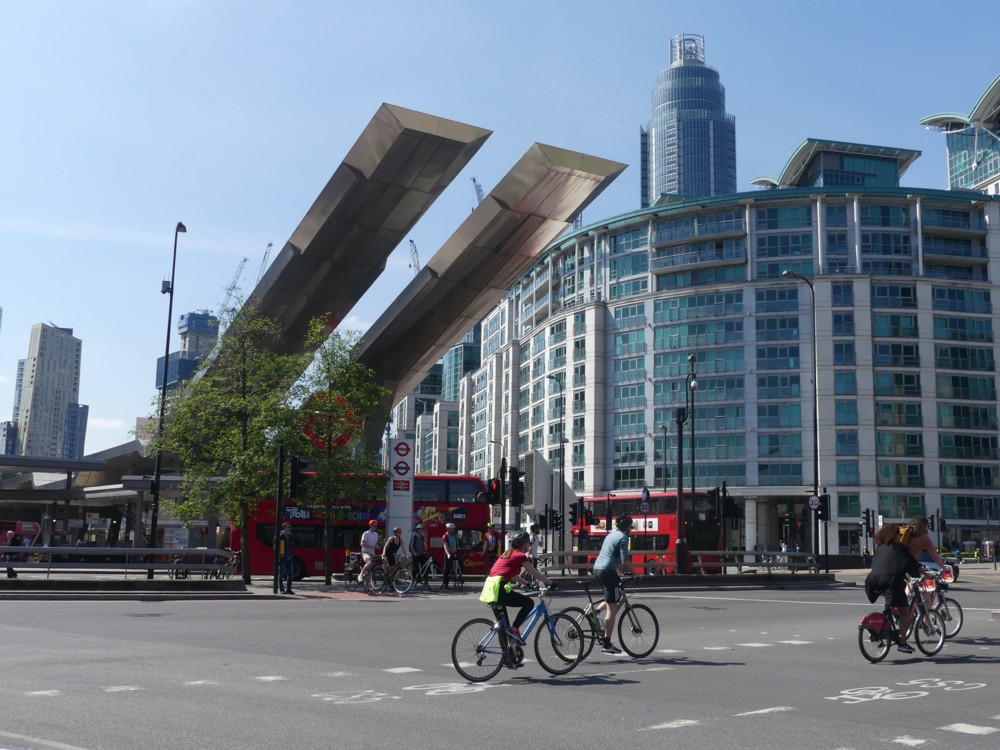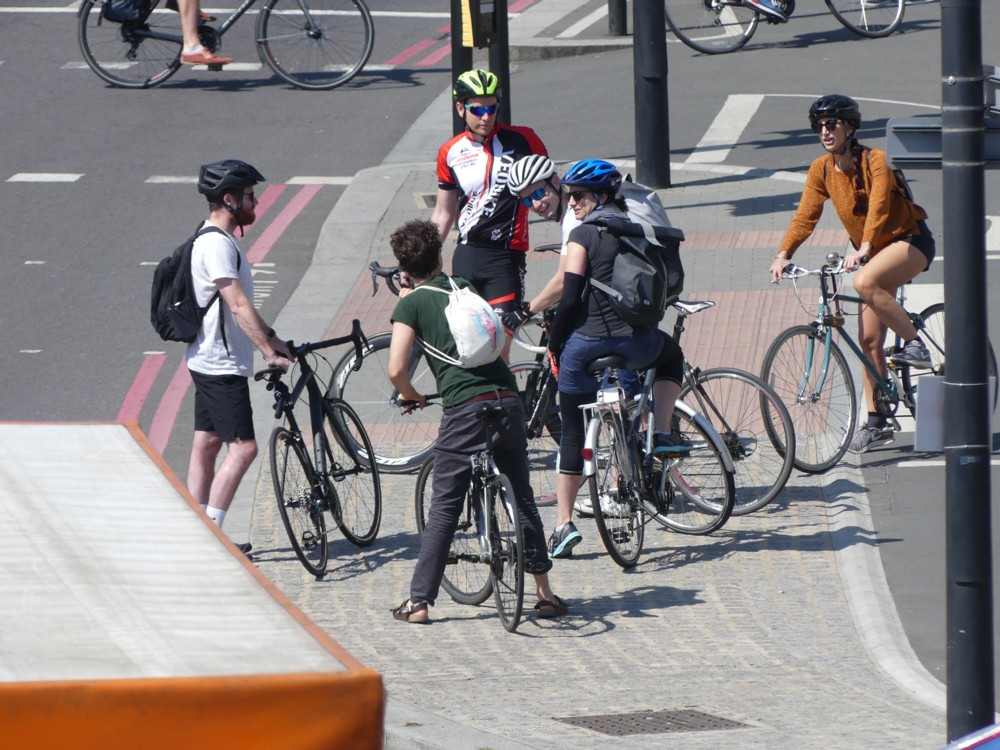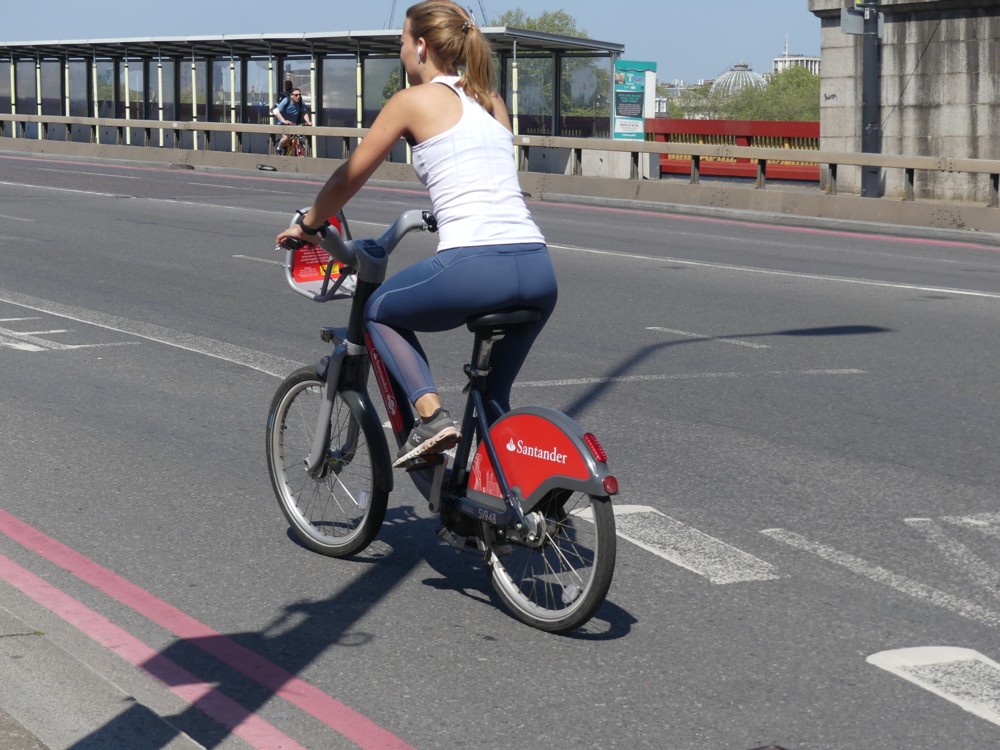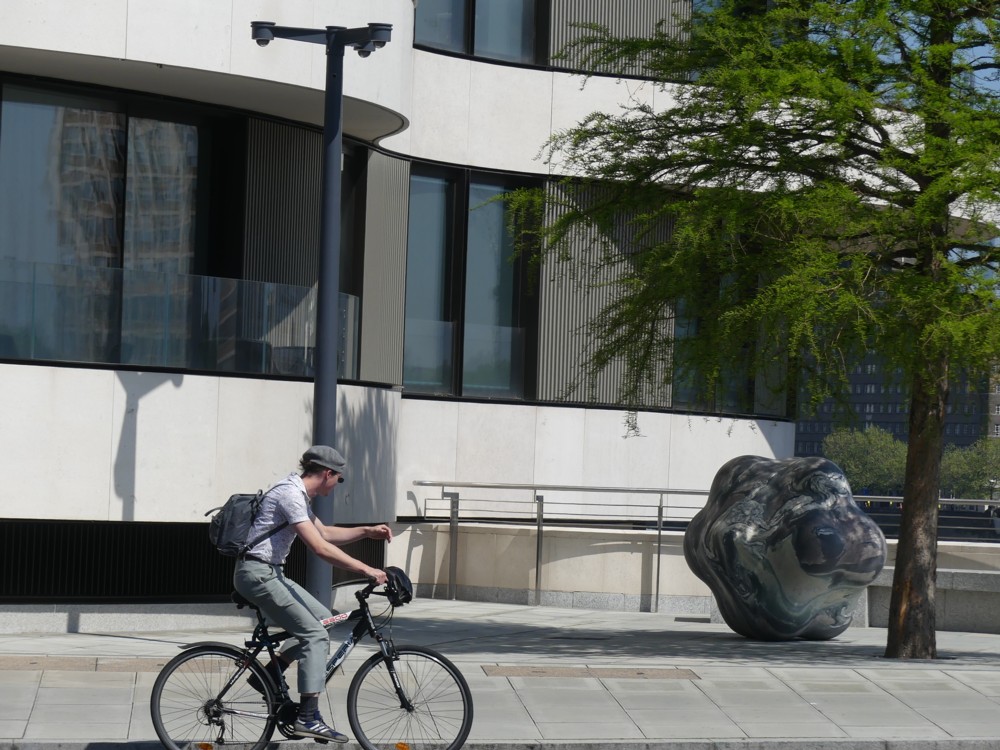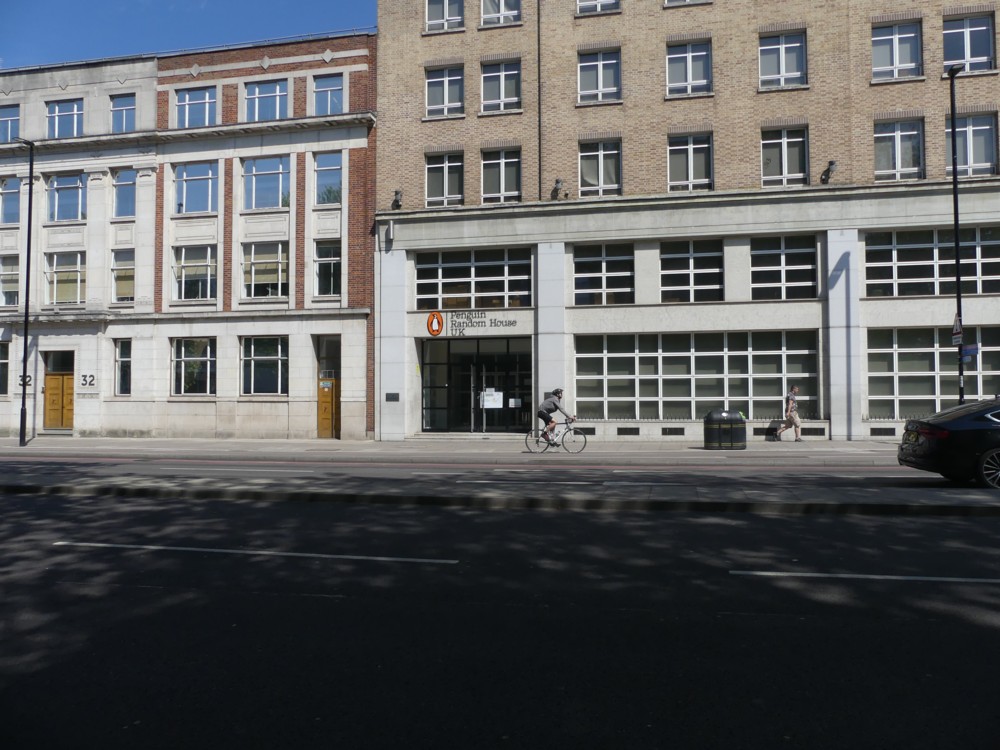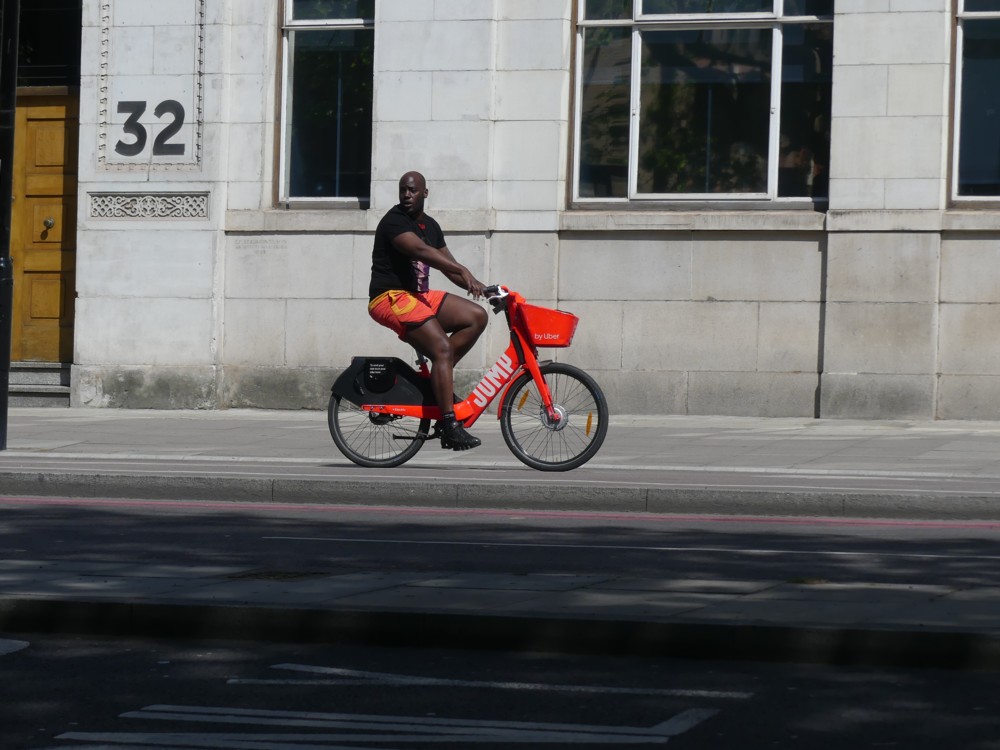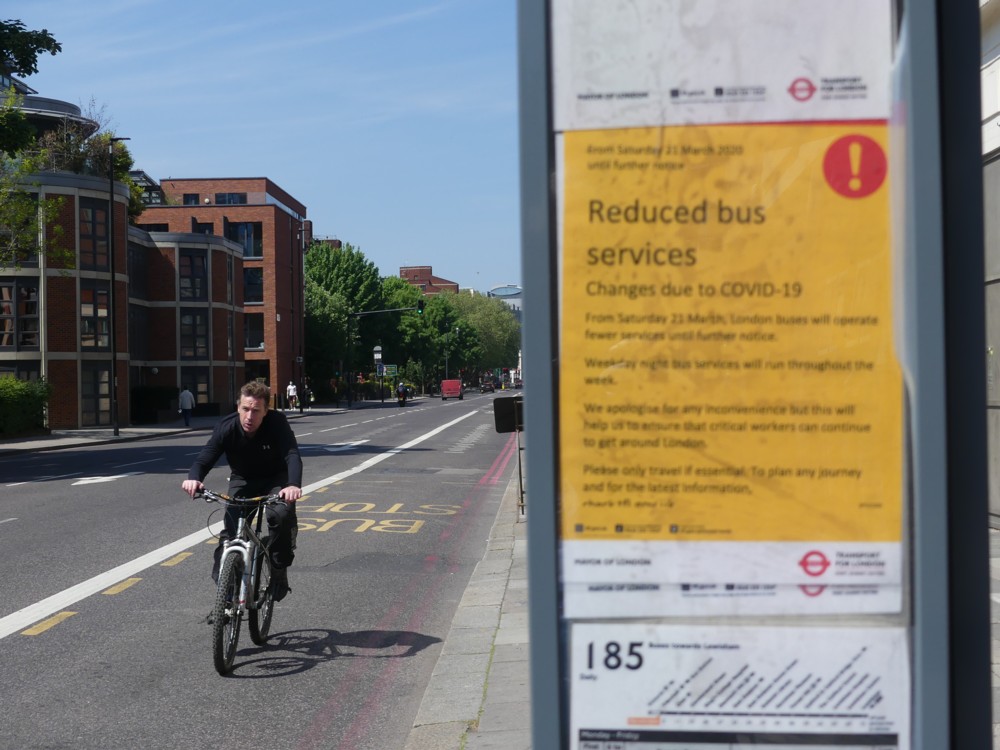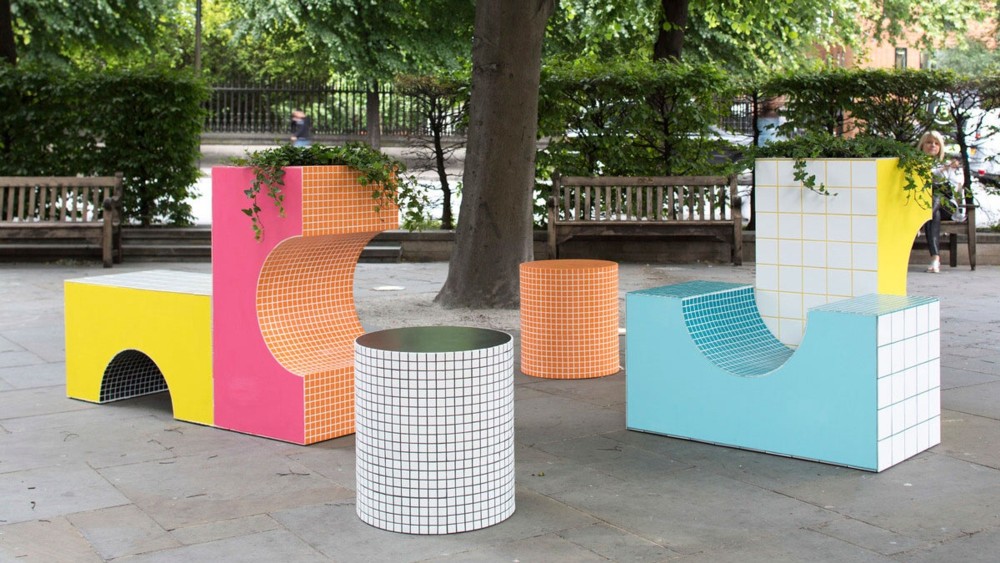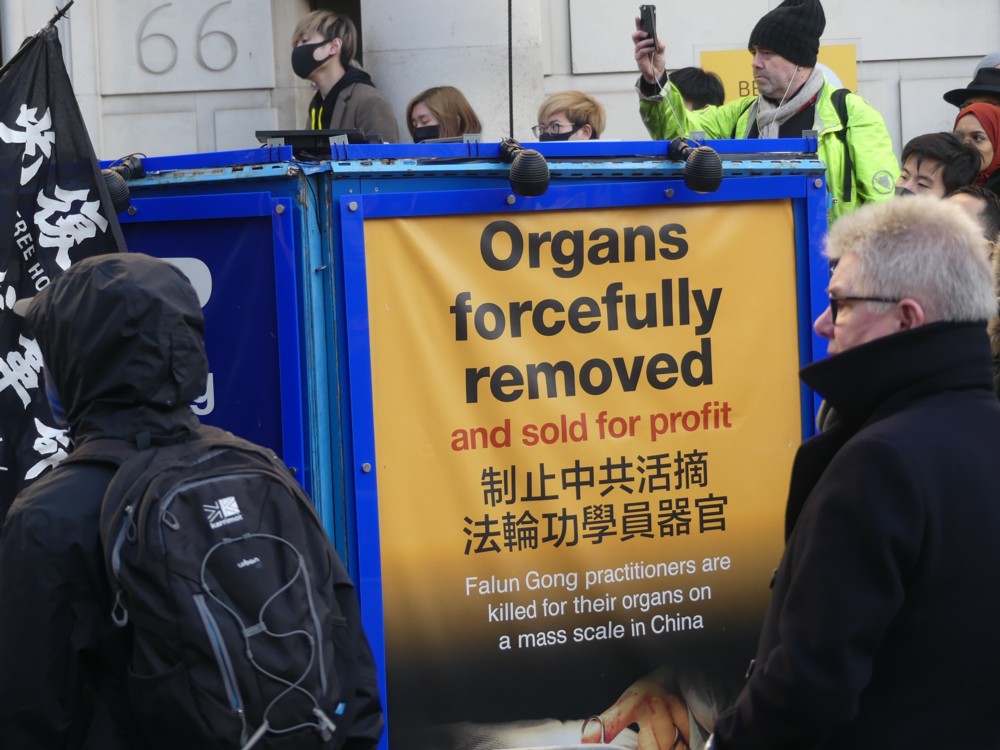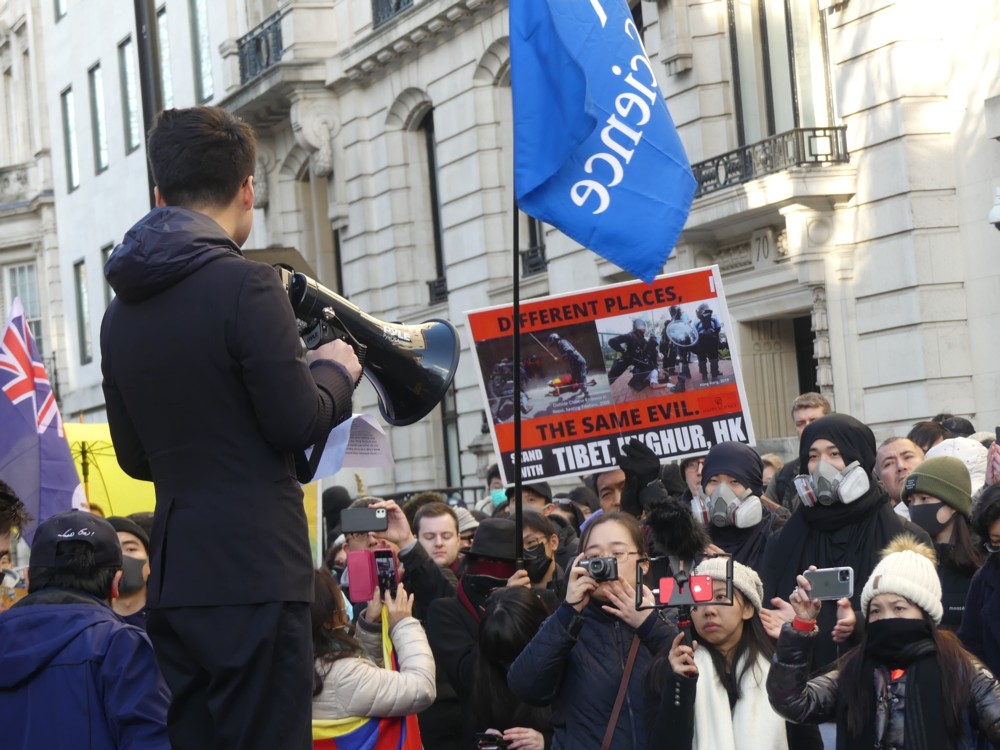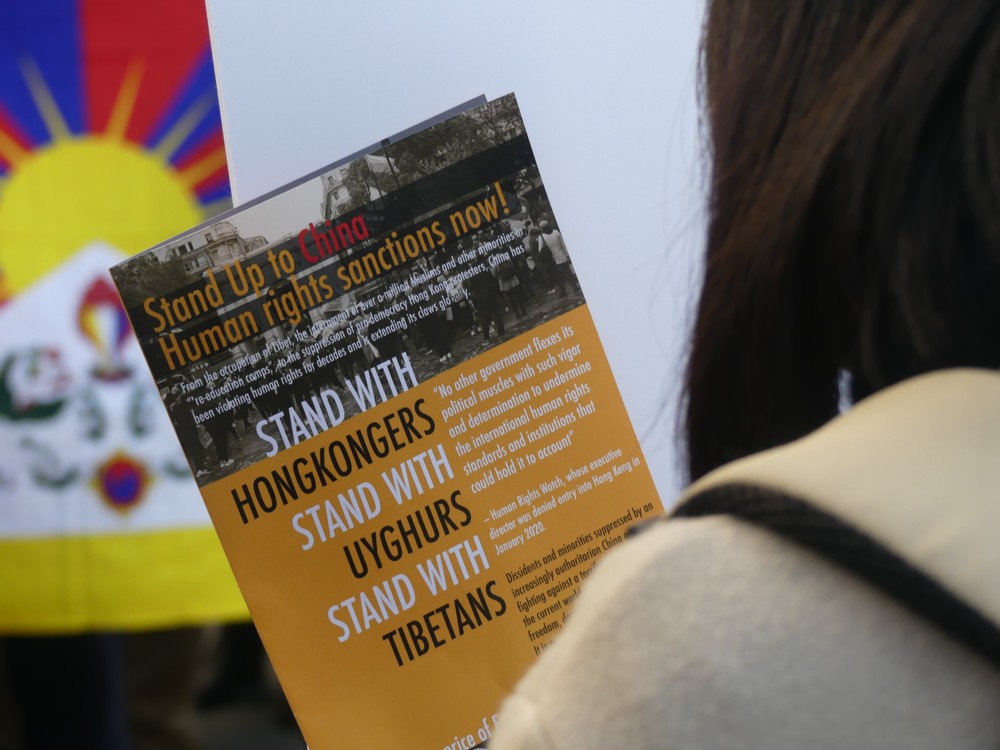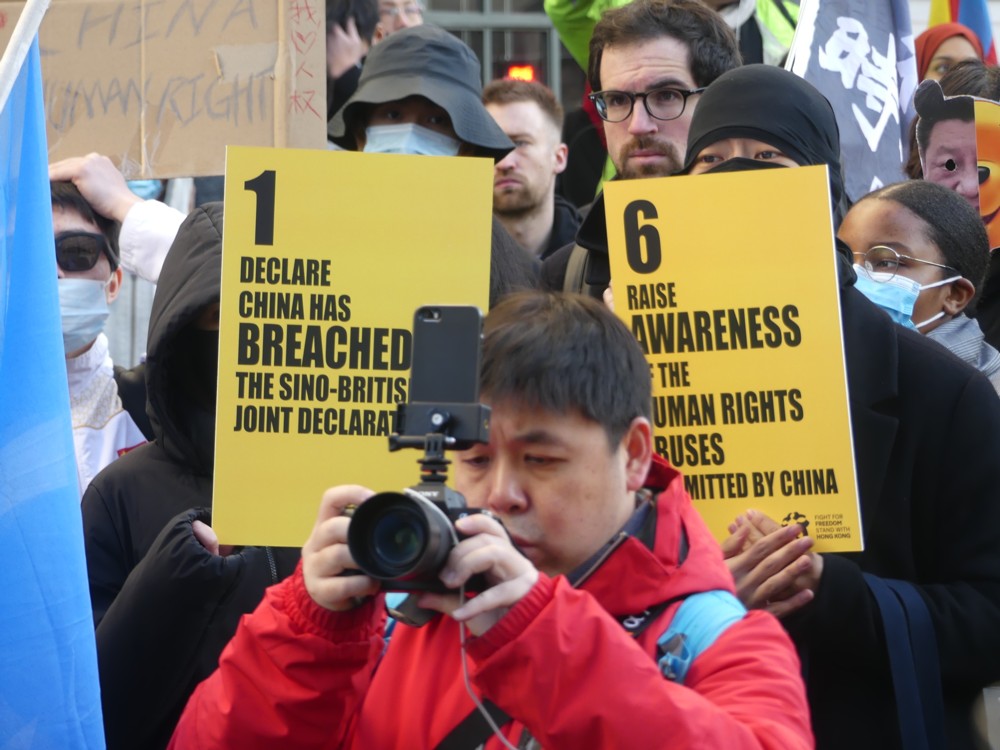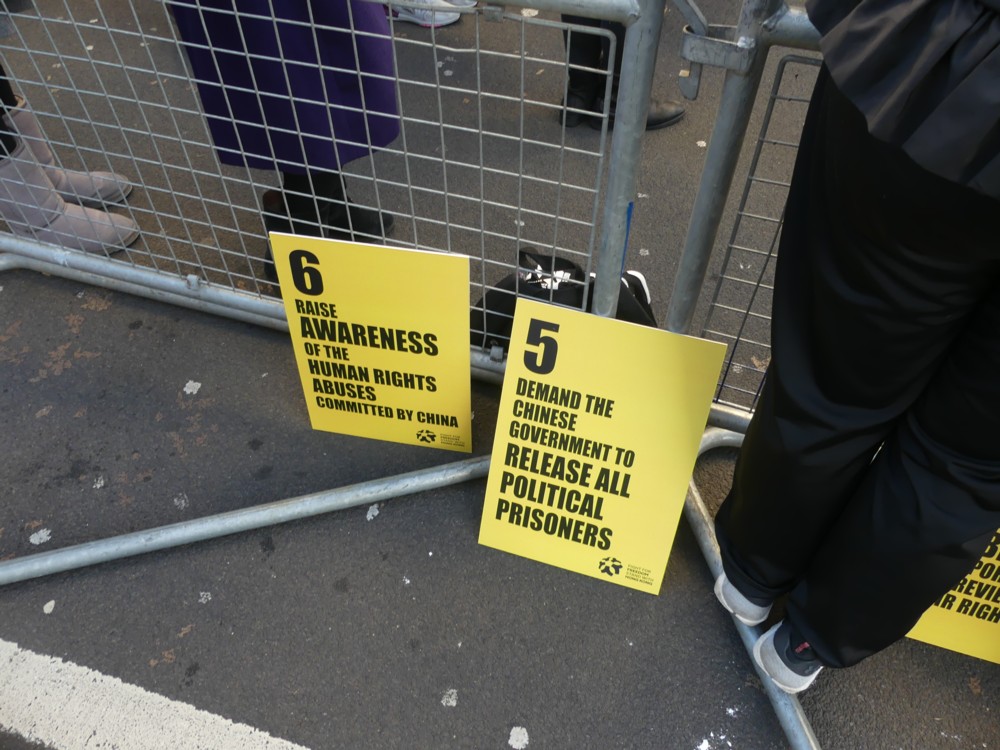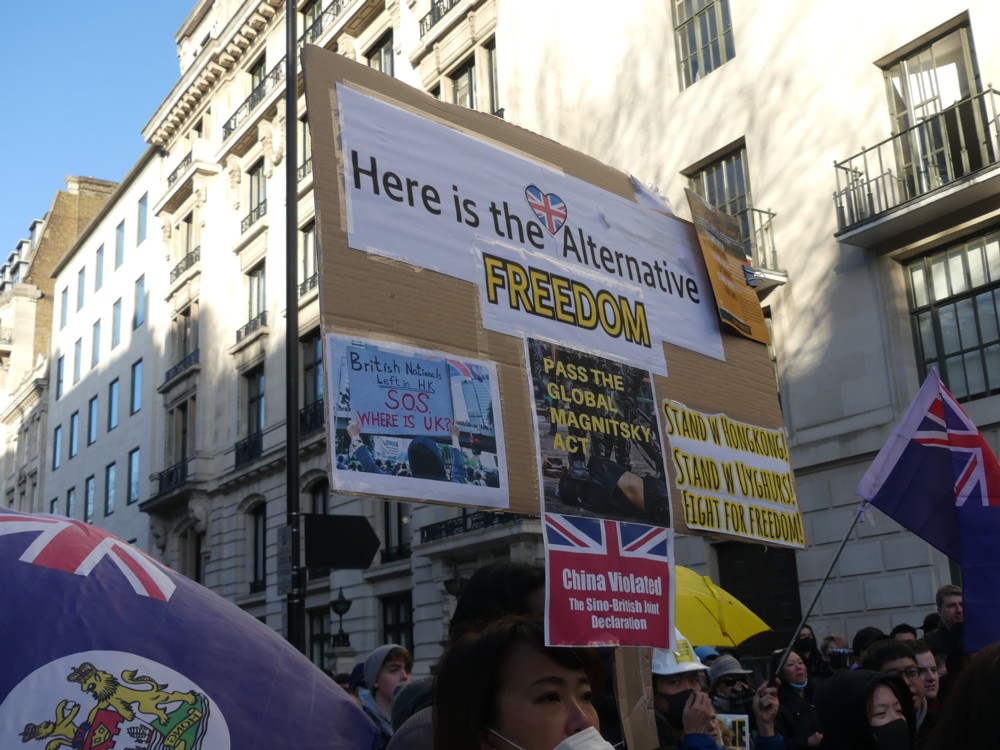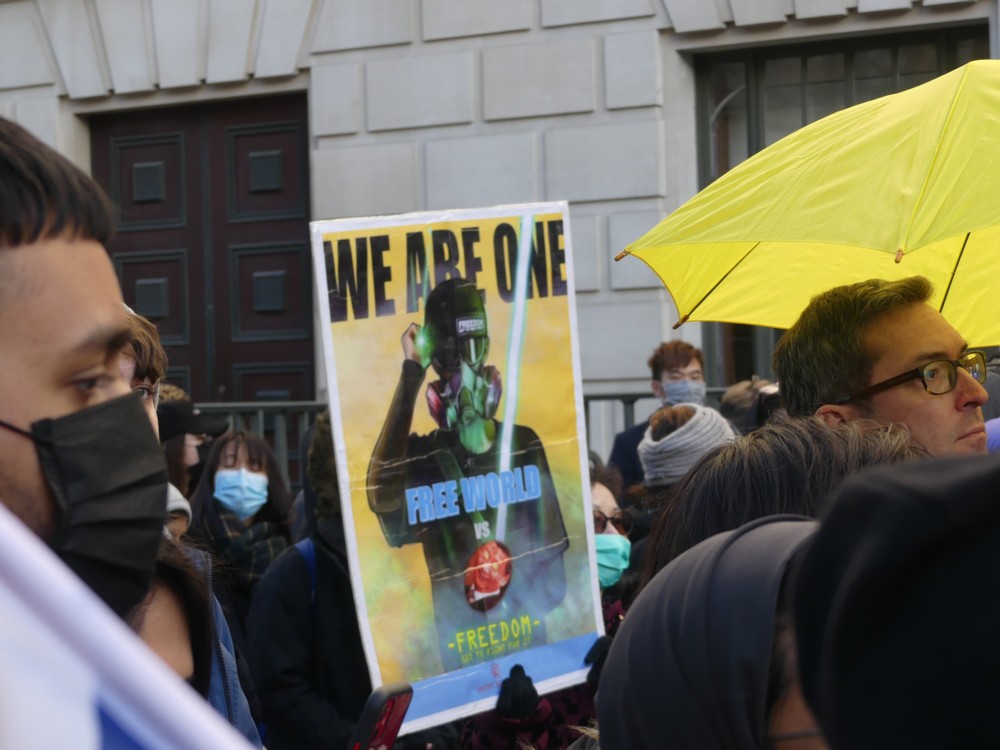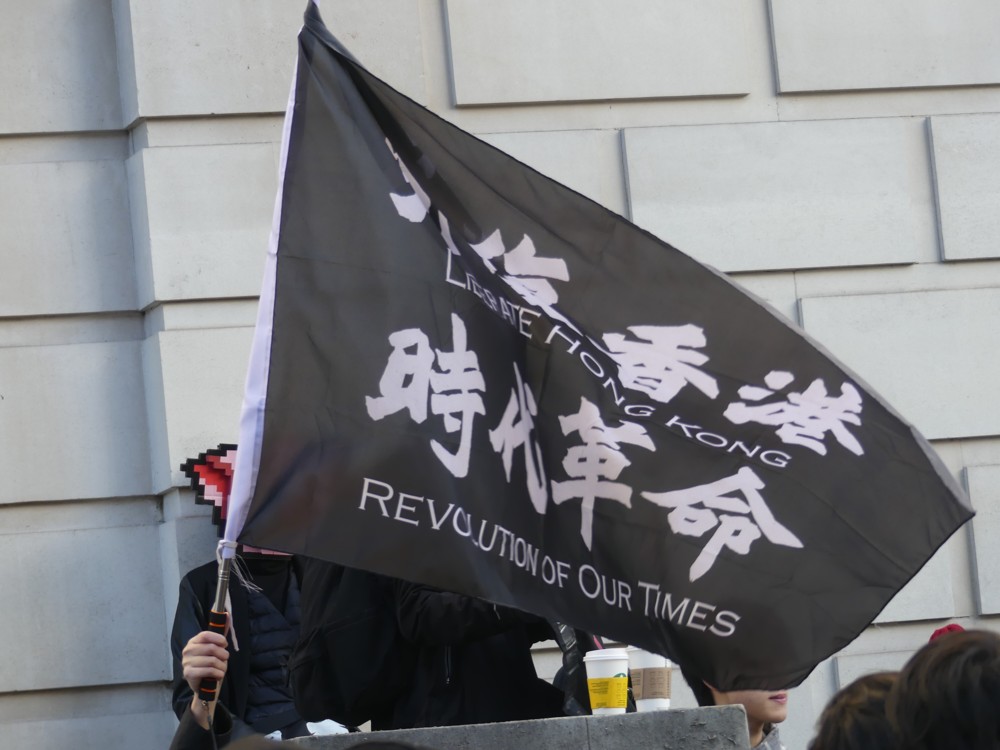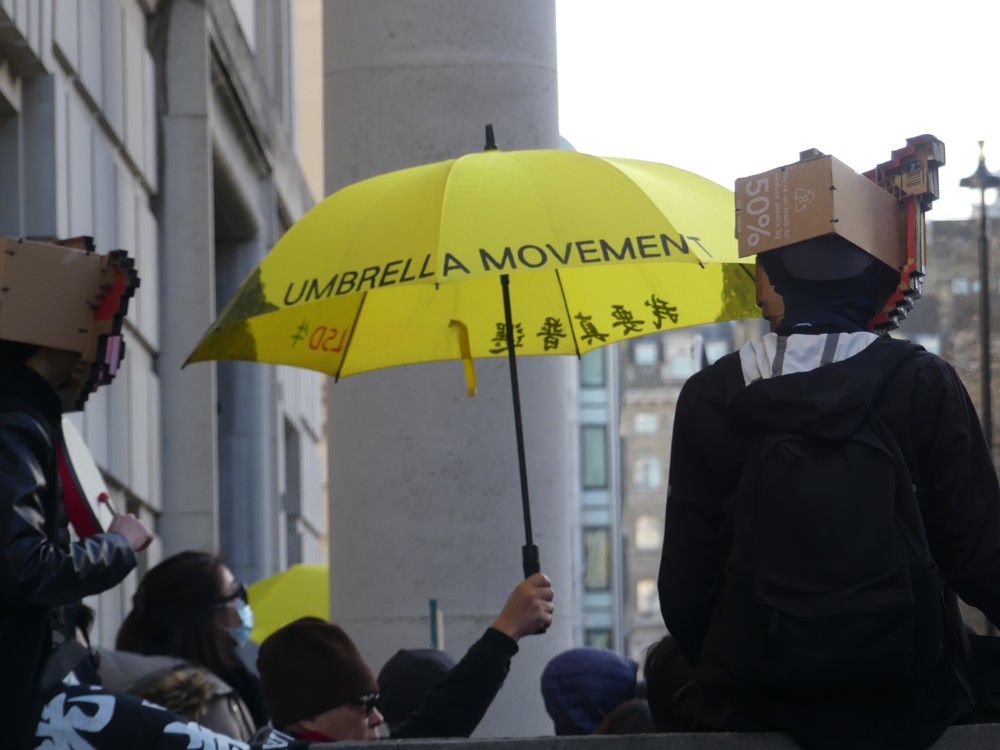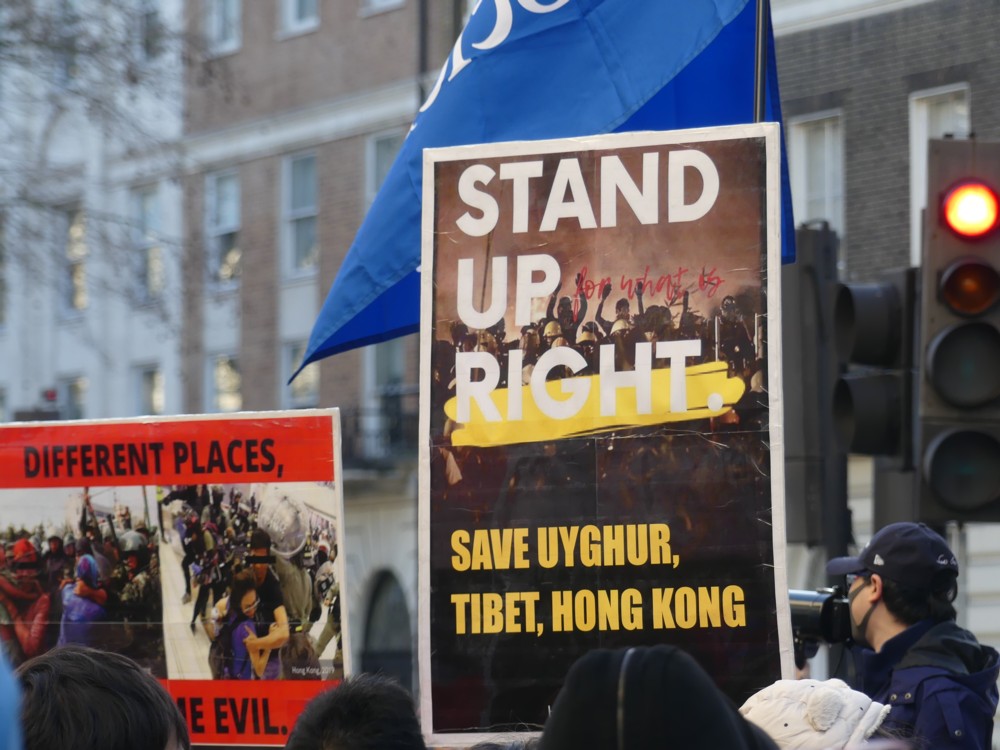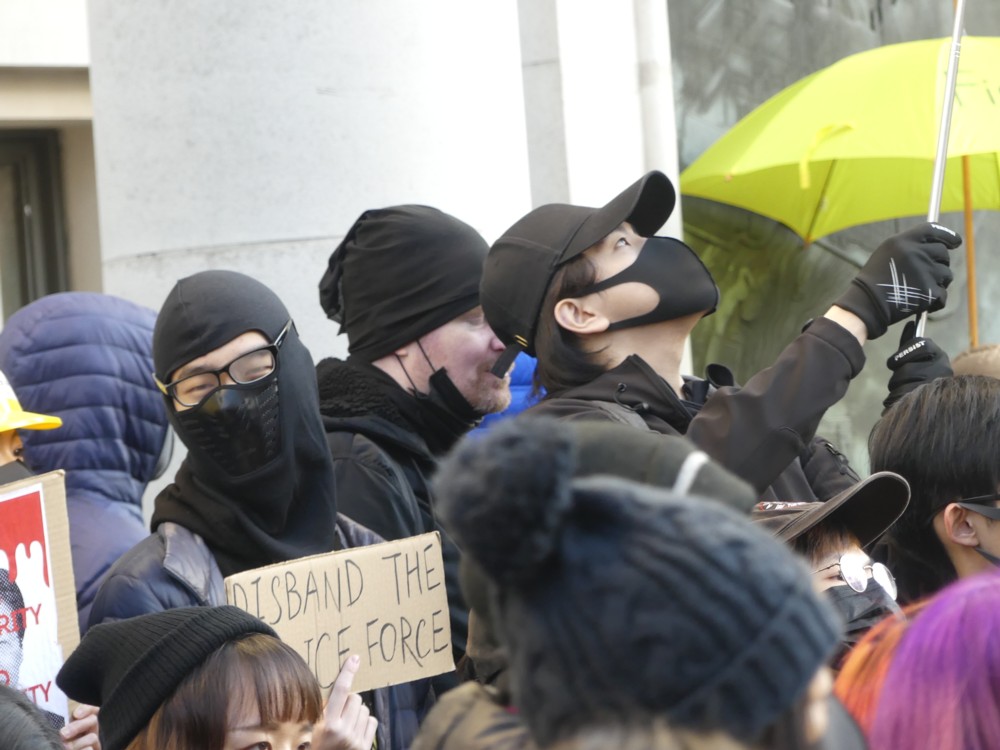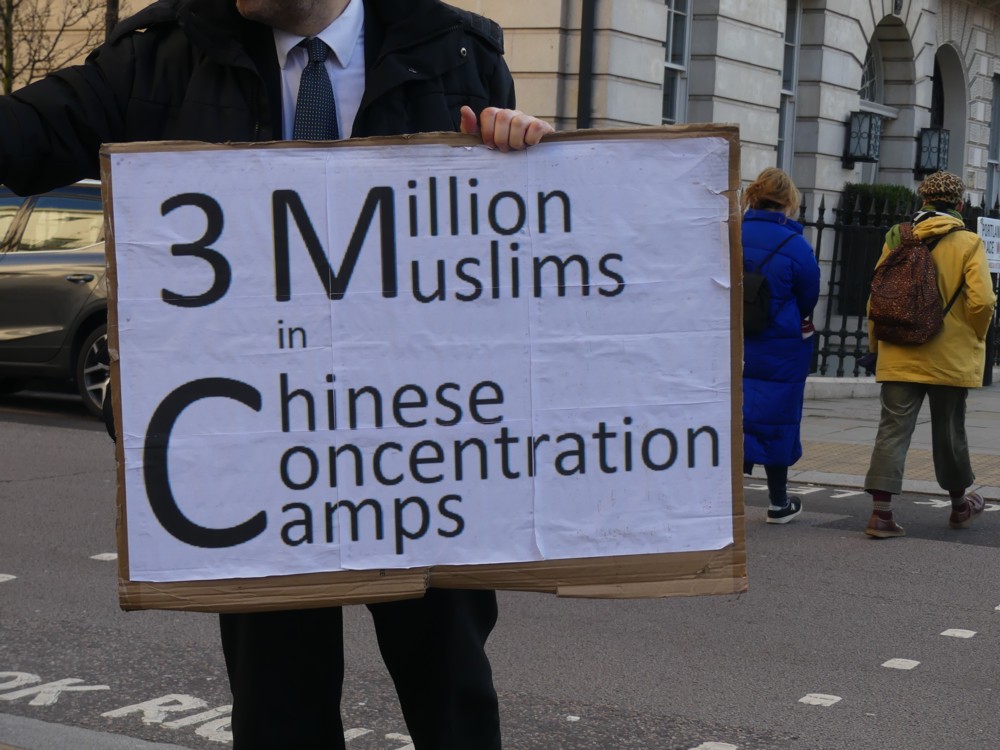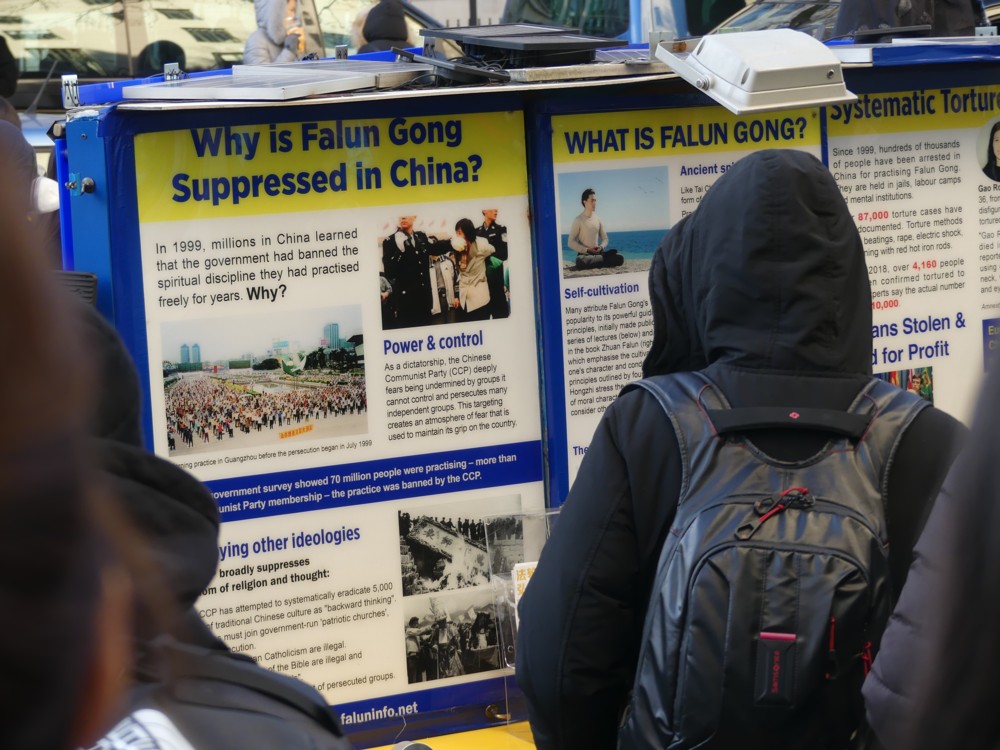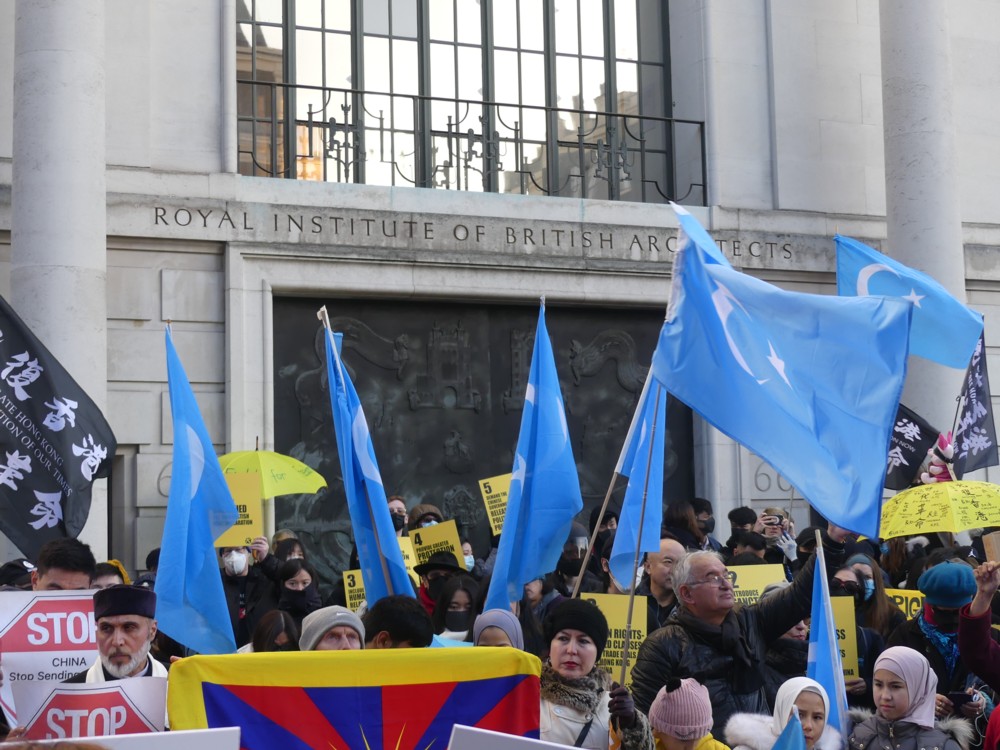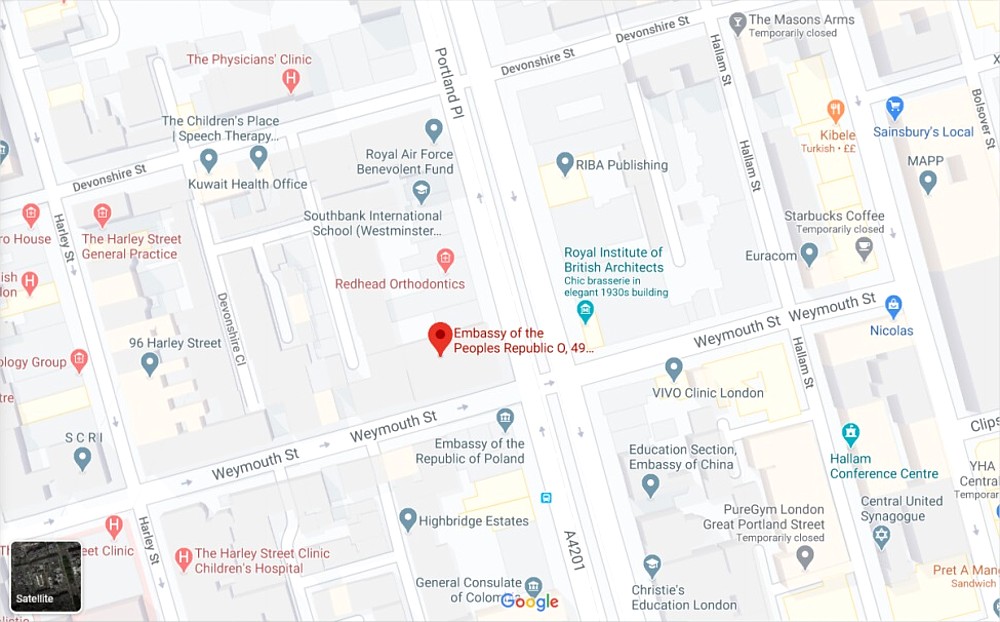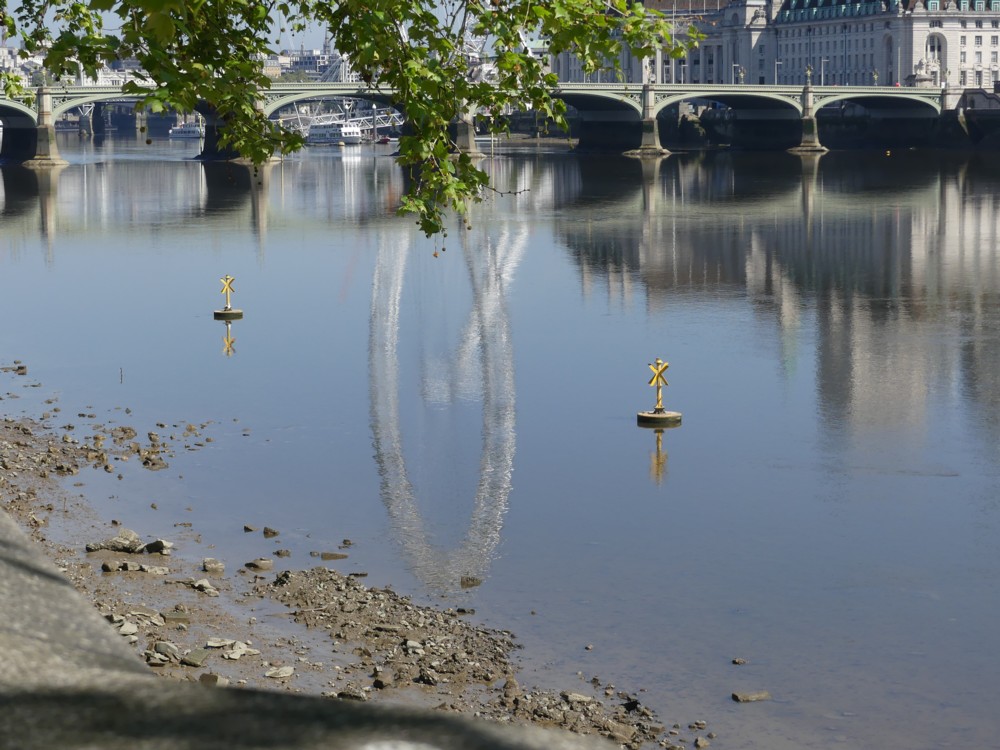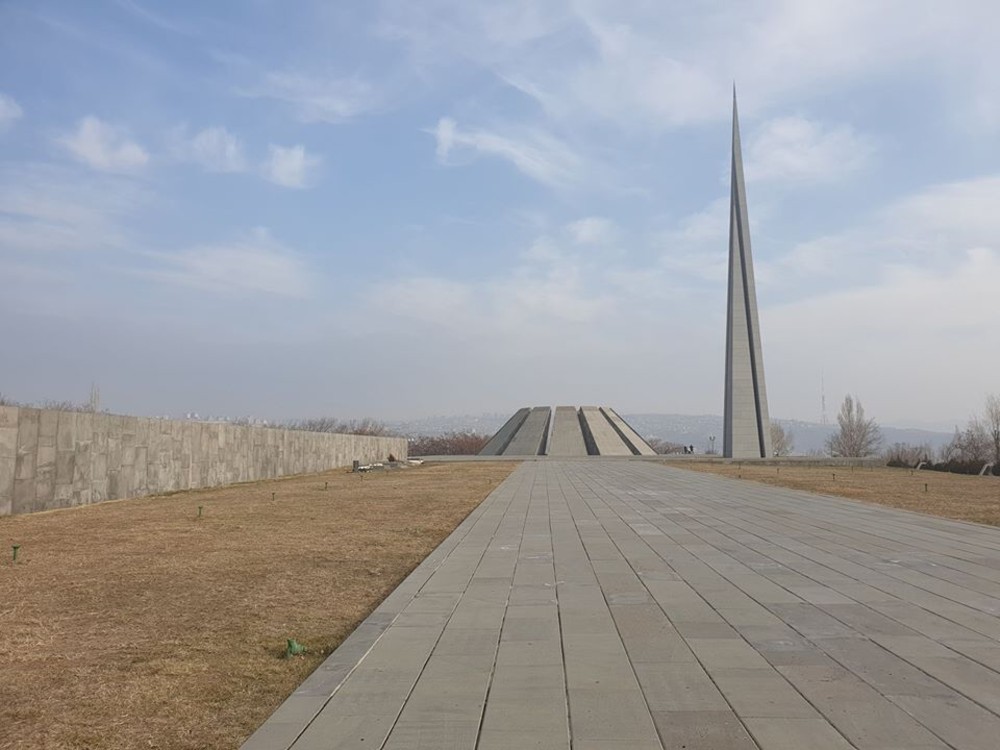Last Sunday, the gloriously sunny day when I photoed this reflection photo, I also photoed many other photos, as I walked to and around Parliament Square, and then along the River to Lambeth Bridge and across, and then to Vauxhall. My aim was to photo the statues in Parliament Square and the two pronged Vauxhall Bus Thing in friendlier light than I had so far managed.
But while engaged in this project, I couldn’t avoid noticing something else that was happening. See if you can spot what these twenty eight photos have in common:
Yes. Well spotted. Cyclists. Lots and lots of cyclists. Cyclists on their own. Cyclists in pairs. Families of cyclists. Great squadrons of cyclists. On otherwise almost entirely empty roads.
Quite what this “means”, I’m not entirely sure. But a major point of this blog is to feature things that seem interesting, without it being entirely clear to me why they are interesting. “Interesting” being the lowest form of interestingness that there is, because it’s the sort that you haven’t yet explained to yourself.
The only titbit of interpretation I can offer is that I caught a Daily Telegraph article about how the Lockdown was beginning to fray at the edges, and illustrated at the top with a photo like one of the ones above, featuring a great cluster of cyclists. I can’t now find this piece, but I swear I saw it. I didn’t read it, because the DT hides most of its stuff behind a paywall these days, and paying my way past paywalls is a habit I don’t want to start catching. But, I did see it. It was something along these lines, but with a cyclists photo at the top instead of a short video about people sunbathing en masses on the beach.
Also, there was me, creeping about photoing these cyclists. I too am fraying the Lockdown at its edges.
Because, another interesting thing about Lockdown London, at any rate the bit I live in, is that the Plod are almost nowhere to be seen. Parliament Square on Sunday contained many cyclists and creepers about like me, but no coppers whatsoever. You’d think Parliament Square would still be a worry to them, yet the only cops I saw that day were charging about in vans, attending to some other matter of far greater importance to them than me creeping about photoing, or than lots of cyclists. Who knows? Maybe they were actually having a go at some crimes.
Now, I know, had any policemen tried interrogating any of these cyclists, their answer would have been: “This is excercise, and exercise is allowed.” That would have been my answer also. But in practise, the rule that the police seem to have been applying during all this History has been more like: “You can go out, but you are not allowed to enjoy it.” It was the way these cyclists were so obviously having a good time taking their exercise that made it feel like defiance of the official line. And my worry was pleasure (because photoing) is what I would have been accused of also. So, I agree with the implication of that DT piece. It’s starting to crumble. If the government is wise, it will now relax things.
At the risk of boring you, another thought occurs to me about these cyclists, which is that slowly but surely the Lockdown is being politicised. Lefties don’t mind the economy tanking quite so much, because they have a government that they hate that they can then blame it all on. They have elections to win that they’ve lately been losing, rather badly. Righties, on the other hand, want the Lockdown to end, so that they can get back to being right about everything.
But cyclists of the sort I was photoing are a classic lefty demographic. If they are making a nonsense of the Lockdown, then the Lockdown is in trouble and needs to be wound down rather fast.
Also, the very fact that Lockdown is being politicised is further evidence that people are no longer taking it that seriously, the Righties in particular. When you start thinking how the crisis du jour will help or hinder your political tribe, then it’s no longer a proper crisis. It’s a mere circumstance.
Please don’t mistake the above for my considered opinions. This is me having made some observations, and then me thinking aloud about those observations.

